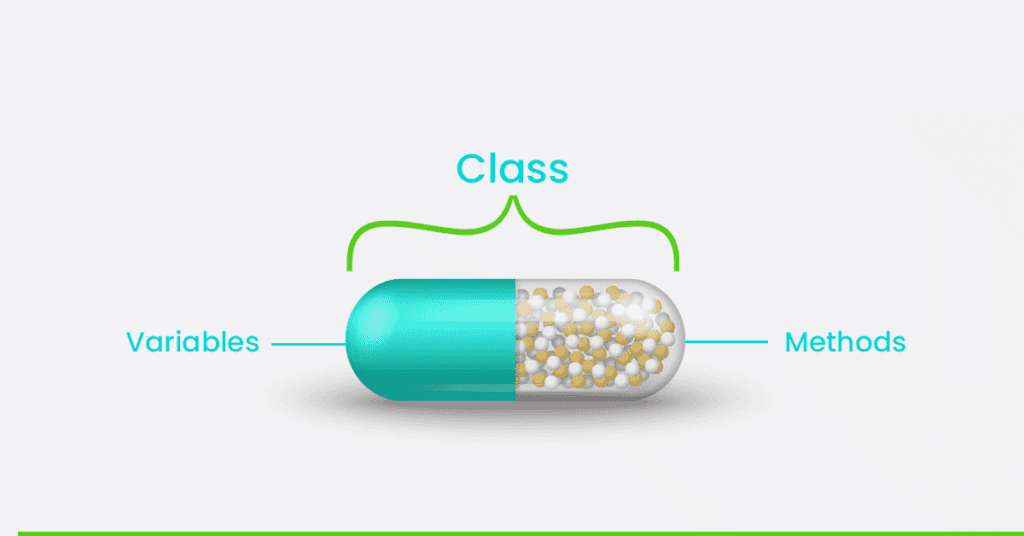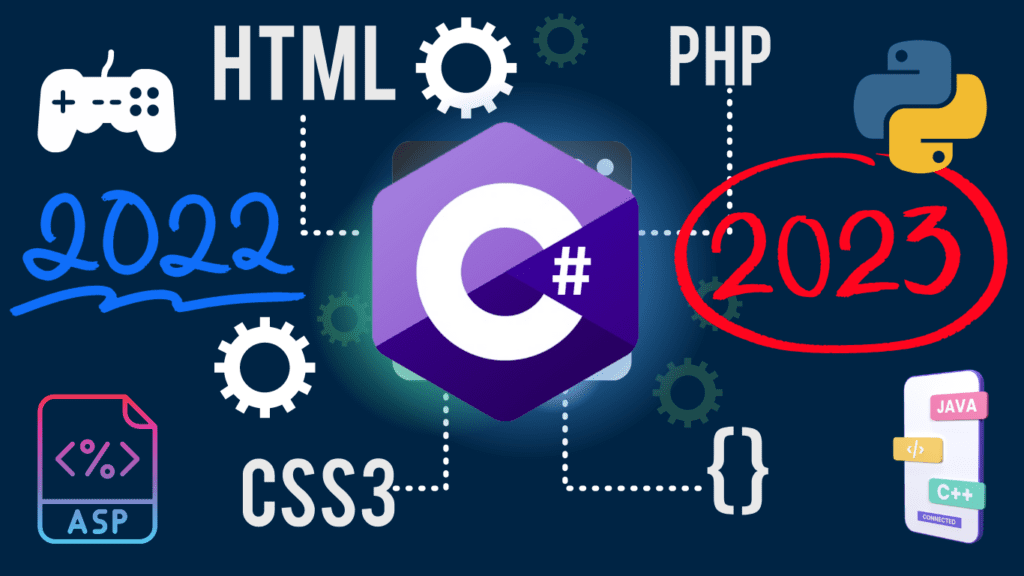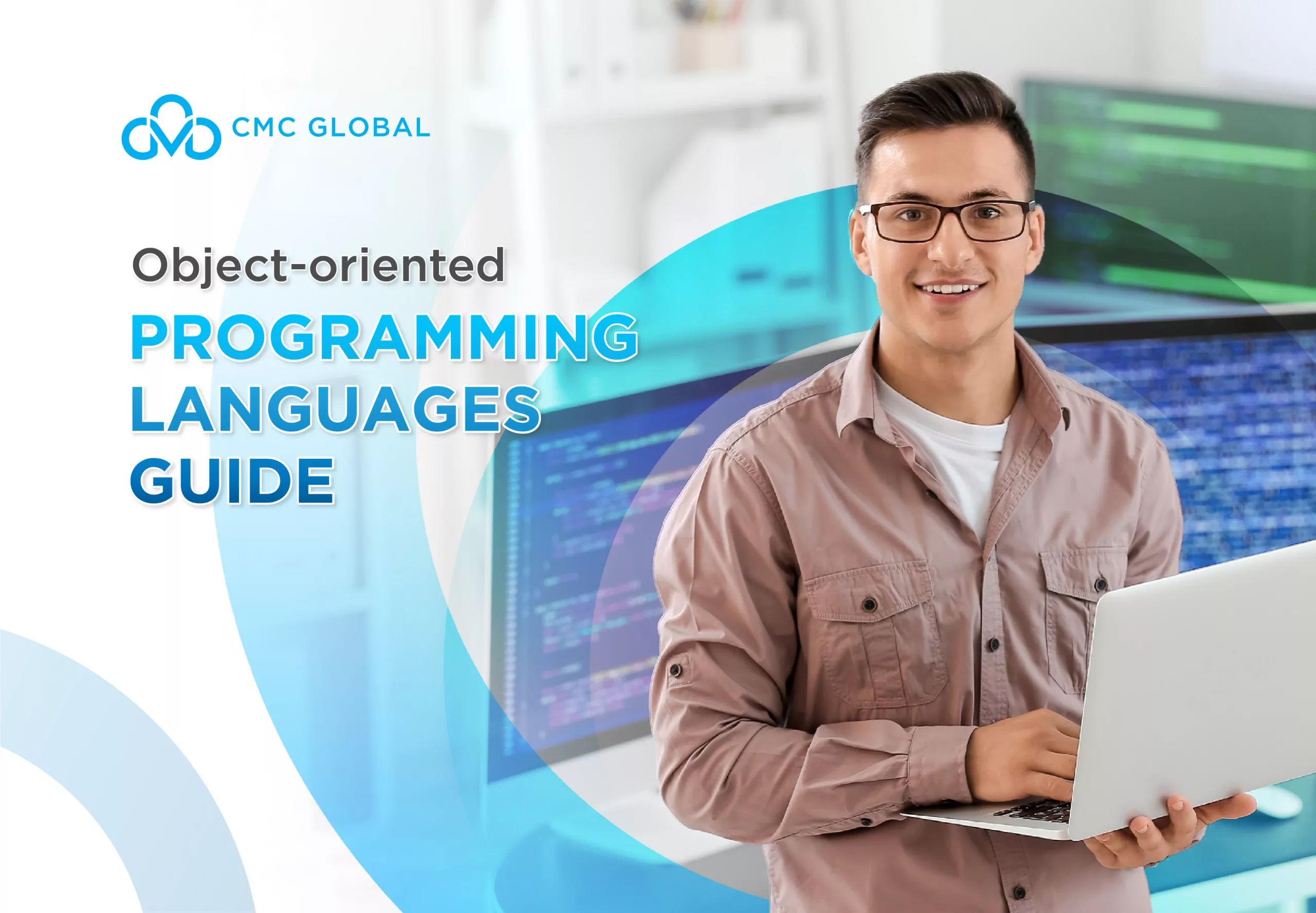Object-Oriented Programming (OCP) languages have revolutionized how software is conceptualized, designed, and implemented. With OOP, code becomes a collection of interacting objects, each responsible for specific tasks, and capable of interacting with one another to achieve complex functionalities.
Join us on this journey to uncover the definition, key concepts, and examples of Object-Oriented Programming languages.
What are object-oriented programming languages?
Object-Oriented Programming (OOP) languages are high-level computer programming languages used to develop software programs by implementing objects and their associated processes within the programming context. Object-oriented programming is a strategy that connects related data and functions into an object and encourages reusing these objects within the same and other systems.
The features listed below are commonly supported by object-oriented languages:
- The capacity to create classes and their associated objects
- Encapsulation
- Inheritance
Key Concepts in Object-Oriented Programming Languages
Object-Oriented Programming (OOP) languages are built around several core concepts that enable developers to structure, organize, and manage their code effectively. These concepts help model real-world entities and their relationships, promoting code reusability, maintainability, and scalability. Here are the key concepts in object-oriented languages:
1. Classes and Objects:
Classes: A class is a blueprint or template for creating objects. It defines the attributes (data members) and behaviours (methods) that objects of that class will possess.
Objects: Objects are instances of classes. They encapsulate data and behaviour, allowing for the representation of real-world entities in the code.
2. Encapsulation:

Encapsulation refers to bundling data (attributes) and methods that operate on that data into a single unit (object). Access to an object’s internal data is controlled through access modifiers (public, private, protected), ensuring that data integrity and security are maintained.
3. Inheritance:
Inheritance allows one class (subclass or derived class) to inherit the attributes and methods of another class (superclass or base class). It facilitates code reuse by allowing new classes to be based on existing classes, inheriting their properties and behaviours.
4. Polymorphism:
Polymorphism enables objects of different classes to be treated as objects of a common superclass, allowing for flexible and dynamic behaviour. Method overriding is a key aspect of polymorphism, where a subclass provides a specific implementation for a method defined in its superclass.
5. Abstraction:
Abstraction focuses on representing essential features of an object while hiding unnecessary details. Abstract classes and interfaces define a common set of methods that concrete classes must implement, ensuring a consistent interface while allowing for varying implementations.
6. Modularity:
Modularity involves breaking down a complex system into smaller, manageable modules or components. Each class represents a module, encapsulating a specific set of functionalities, which promotes code organization and readability.
7. Composition:
Composition refers to the practice of building complex objects by combining simpler objects as attributes. It allows for creating more flexible and modular designs than relying solely on inheritance.
8. Association:
Association represents the relationship between classes, where one class is related to another class in some way. Associations can be one-to-one, one-to-many, or many-to-many, representing different types of connections between objects.
9. Aggregation and Composition:
Aggregation and composition are specialized forms of association. Aggregation represents a “has-a” relationship between classes, where one class contains or comprises other classes.
Composition is a stronger form of aggregation, implying ownership and a “whole-part” relationship.
10. Interfaces and Abstract Classes:
Interfaces define a contract of methods that concrete classes must implement. They enable the definition of common behaviour without dictating implementation details.
Abstract classes are classes that cannot be instantiated and serve as a foundation for other classes to inherit from. They can also contain abstract methods that subclasses must implement.
Examples of object-oriented programming languages
1 Java
One of the most widely used OOP languages, Java is known for its platform independence, strong typing, and extensive libraries. It features classes, objects, inheritance, and polymorphism as core OOP concepts.
2 Python
Python combines simplicity with powerful OOP capabilities. It employs a unique approach to OOP, emphasizing readability and ease of use. Python supports classes, objects, inheritance, and polymorphism, making it suitable for both beginners and advanced developers.
3 C++
An extension of the C programming language, C++ adds object-oriented features like classes, objects, and inheritance. C++ allows low-level memory manipulation and high-level OOP constructs, making it versatile for various applications.
4 C#

Developed by Microsoft, C# is designed for building Windows applications and .NET framework. It supports modern OOP principles and features like properties, events, and delegates. C# is widely used for desktop, web, and game development.
5 Ruby
Ruby is known for its elegant and flexible syntax. It follows a pure object-oriented approach where everything is an object, and it supports features like mixins for multiple inheritance and dynamic typing.
6 Swift
Developed by Apple, Swift is used for building iOS, macOS, watchOS, and tvOS applications. Swift is designed with modern programming practices in mind and offers strong support for classes, structs, and protocols.
7 PHP
While initially designed for web development, PHP has evolved to incorporate OOP principles. It supports classes, objects, inheritance, and interfaces, allowing developers to create well-structured and reusable code.
8 Smalltalk
Smalltalk heavily emphasises objects, and dynamic typing, often considered one of the earliest pure object-oriented programming languages. It has influenced the development of other OOP languages.
9 Perl
Although known for its text-processing capabilities, Perl also supports object-oriented programming. It provides classes and objects, allowing developers to create modular and maintainable code.
10 Scala
Scala runs on the Java Virtual Machine (JVM) and seamlessly integrates object-oriented and functional programming paradigms. It supports classes, traits (similar to interfaces), and other advanced OOP features.
Read more Top 10 Unmissable Programming Languages To Learn In 2023
Final words
Through the years, numerous OOP languages like Java, C++, Python, and C# have become foundational tools in the software engineering toolkit. If your business is planning to build your software development plan, schedule a free consultation with CMC Global for more information.





